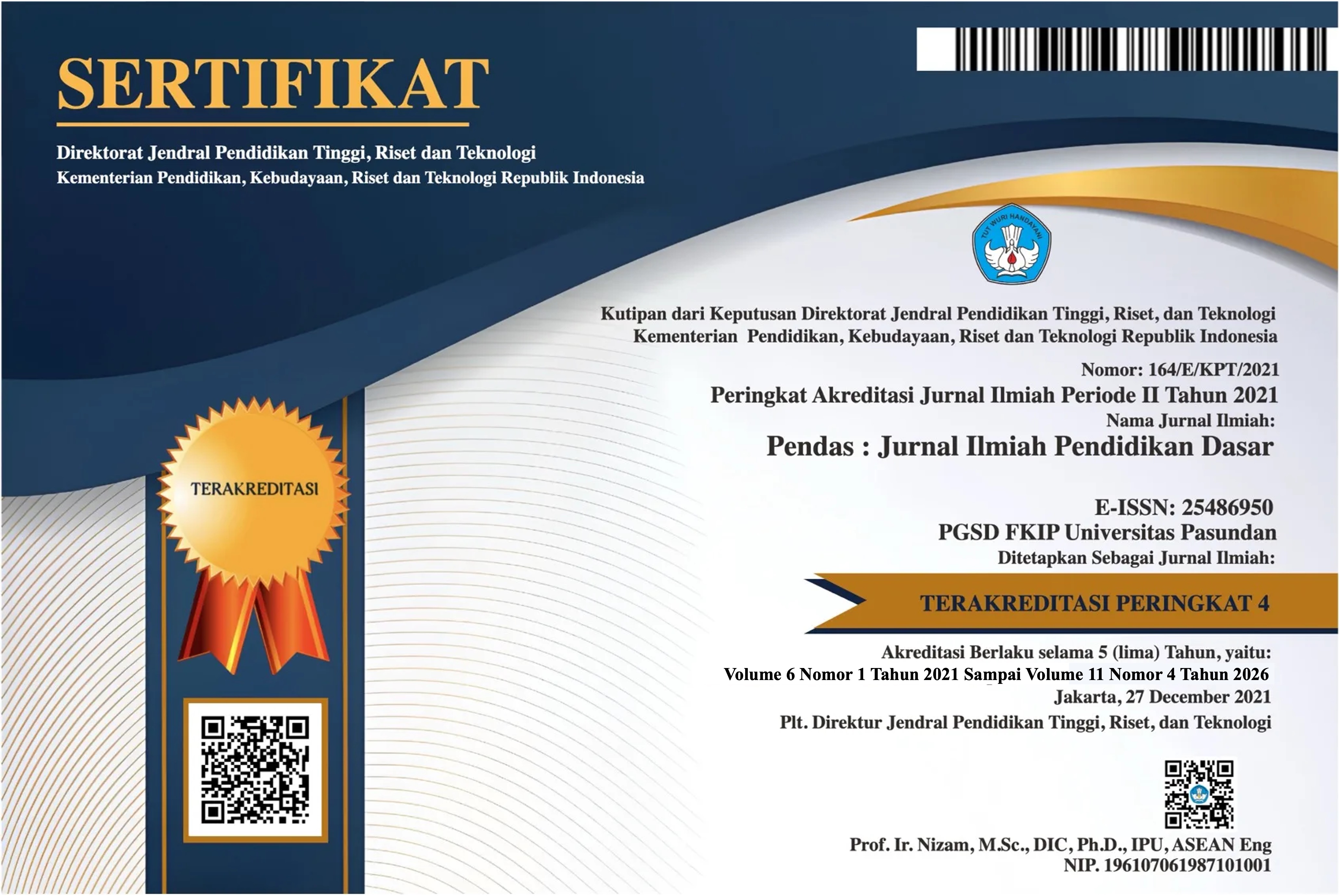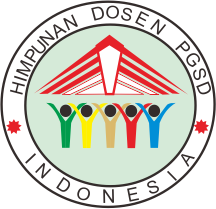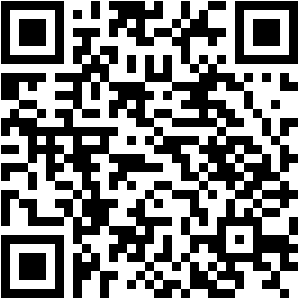ANALISIS FAKTOR PENYEBAB RENDAHNYA INQUISITIVENESS DALAM PEMBELAJARAN MATEMATIKA PADA MAHASISWA PGSD UNIVERSITAS PGRI MADIUN
DOI:
https://doi.org/10.23969/jp.v10i04.32375Keywords:
inquisitiveness, pembelajaran matematika, mahasiswa PGSDAbstract
Penelitian ini bertujuan untuk mengidentifikasi faktor-faktor yang menyebabkan rendahnya rasa ingin tahu pada siswa PGSD dalam pembelajaran matematika. Pendekatan penelitian yang digunakan adalah metode campuran dengan dominasi kualitatif. Subjek penelitian berjumlah 120 mahasiswa dari Universitas PGRI Madiun. Data dikumpulkan melalui kuesioner dan wawancara, kemudian dianalisis secara deskriptif dan tematik. Hasil penelitian menunjukkan dua faktor utama penyebab rendahnya rasa ingin tahu dalam pembelajaran matematika, yaitu faktor internal (58%) dan faktor eksternal (42%). Temuan wawancara menegaskan bahwa rasa takut salah, kecemasan matematika, rendahnya kepercayaan diri dalam memecahkan soal, serta persepsi negatif terhadap matematika menjadi hambatan utama pengembangan rasa ingin tahu. Faktor eksternal meliputi metode pengajaran yang dominan prosedural, jarangnya penggunaan masalah kontekstual, dan minimnya media pembelajaran interaktif. Temuan ini menegaskan perlunya penerapan pembelajaran matematika berbasis inkuiri dan pemecahan masalah kontekstual untuk menumbuhkan rasa ingin tahu siswa.
Downloads
References
Celik, H., et al. (2021). Inquiry-based learning in teacher education. Journal of Teacher Education, 72(3), 292–305.
Engel, S. (2015). The hungry mind: The origins of curiosity in childhood. Harvard University Press.
Ahsan, M., Asgher, T., & Hussain, Z. (2020). The Effects of Shyness and Lack of Confidence as Psychological Barriers on EFL Learners’ Speaking Skills: A Case Study of South Punjab. Global Regional Review, V(II), 109–119. https://doi.org/10.31703/grr.2020(v-ii).12
Chu, S. K. W., Tse, S. K., Loh, E. K. Y., & Chow, K. (2011). Collaborative inquiry project-based learning: Effects on reading ability and interests. Library and Information Science Research, 33(3), 236–243. https://doi.org/10.1016/j.lisr.2010.09.008
Creswell, J. (2012). Educational Research: Planning, Conducting, and Evaluating Quantitative and Qualitative Research. (Fourth Edi). Boston: MA: Pearson.
Felmer, P., Pehkonen, E., & Kilpatrick, J. (2016). Posing and Solving Mathematical Problems: Advances and New Perspectives. In Springer Nature.
Fitriani, H., Asy’Ari, M., Zubaidah, S., & Mahanal, S. (2018). Critical Thinking Disposition of Prospective Science Teachers at IKIP Mataram, Indonesia. Journal of Physics: Conference Series, 1108(1), 5–11. https://doi.org/10.1088/1742-6596/1108/1/012091
Hadi, F. R., & Maharani, S. (2022). Analysis of Prospective Elementary School Teachers’ Inquisitiveness in Solving Mathematics Problems. QALAMUNA: Jurnal Pendidikan, Sosial, Dan Agama, 14(2), 995–1010. https://doi.org/10.37680/qalamuna.v14i2.3854
Hadi, F. R., & Mulyadi, M. (2025). Exploring the Evolution of Inquisitiveness in Education: A Bibliometric Perspective Over the Last Decade. EDUKASIA: Jurnal Pendidikan Dan Pembelajaran, 6(1), 373–384. https://doi.org/10.62775/edukasia.v6i1.1417
Hadi, F. R., Nusantara, T., Mahanal, S., & Kuswandi, D. (2025). Exploring pre-service teachers’ inquisitiveness in contradictory mathematics problems. Edelweiss Applied Science and Technology, 9(4), 2048–2056. https://doi.org/10.55214/25768484.v9i4.6473
Hadie, S. N. H., Abdul Manan@Sulong, H., Hassan, A., Mohd Ismail, Z. I., Talip, S., & Abdul Rahim, A. F. (2018). Creating an engaging and stimulating anatomy lecture environment using the Cognitive Load Theory-based Lecture Model: Students’ experiences. Journal of Taibah University Medical Sciences, 13(2), 162–172. https://doi.org/10.1016/j.jtumed.2017.11.001
Klorina, M. J., & Juandi, D. (2022). Kesulitan Belajar Matematika Siswa di Indonesia Ditinjau dari Self-Efficacy: Systematic Literature Review (SLR). Symmetry: Pasundan Journal of Research in Mathematics Learning and Education, 7(2), 181–192. https://doi.org/10.23969/symmetry.v7i2.6435
Litman, J. A. (2005). Curiosity and the pleasures of learning: Wanting and liking new information. Cognition and Emotion, 19(6), 793–814. https://doi.org/10.1080/02699930541000101
Litman, J. A., Robinson, O. C., & Demetre, J. D. (2017). Intrapersonal curiosity: Inquisitiveness about the inner self. Self and Identity, 16(2), 231–250. https://doi.org/10.1080/15298868.2016.1255250
Oudeyer, P. Y., Gottlieb, J., & Lopes, M. (2016). Intrinsic motivation, curiosity, and learning: Theory and applications in educational technologies. In Progress in Brain Research (1st ed., Vol. 229). Elsevier B.V. https://doi.org/10.1016/bs.pbr.2016.05.005
Ryan, R. M., & Deci, E. L. (2020). Intrinsic and extrinsic motivation from a self-determination theory perspective: Definitions, theory, practices, and future directions. Contemporary Educational Psychology, 61(April), 101860. https://doi.org/10.1016/j.cedpsych.2020.101860
Watson, L. (2015). Why Should We Educate for Inquisitiveness? (1st editio). New York: Routledge. https://doi.org/https://doi.org/10.4324/9781315714127
Watson, L. (2018). Curiosity and Inquisitiveness (1st editio). New York. https://doi.org/https://doi.org/10.4324/9781315712550
Downloads
Published
Issue
Section
License
Copyright (c) 2025 Pendas : Jurnal Ilmiah Pendidikan Dasar

This work is licensed under a Creative Commons Attribution 4.0 International License.


















